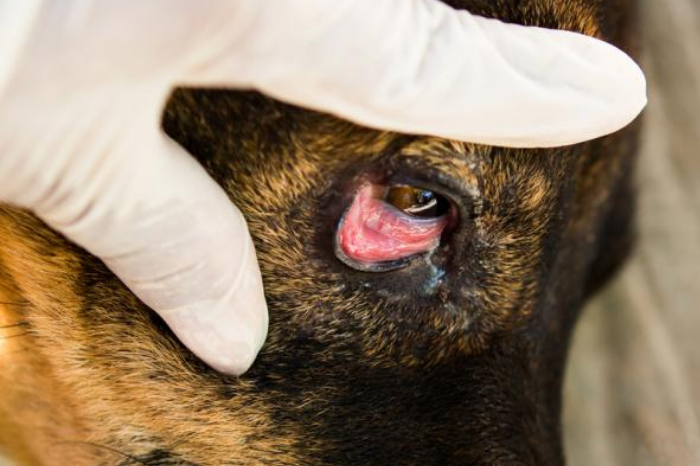

RENAL FAILURE IN DOGS: Signs, Symptoms and Treatment
The kidneys are multifunctional organs. They principally act to remove waste products from the bloodstream, regulate the levels of certain essential minerals such potassium and sodium, conserve water, secrete hormones essential for the production of red blood cells, and produce urine.
Renal failure (kidney failure) is the result of several diseases affecting the kidneys and related organs. Technically, it occurs when the kidneys can no longer perform their function efficiently. Thus, if your veterinarian suspects that your dog has a kidney problem that might end in renal failure in the future, don’t lose hope. With that note in mind, we at the City Vet Clinic would like to give you a few important things that you should know.
With deep medical implications of the disease itself, it is best to understand the surrounding principles that cause kidney failure which include toxins (ethylene glycol), aminoglycoside antibiotics, hypercalcemia, hemoglobinuria, melamine-cyanuric acid, grapes, or raisins, NSAID’s, ischemia, and infection (leptospirosis, borreliosis).
Let’s dive into knowing the disease with more detailed information, and what you can do to prevent and treat the disease condition.
The same with humans, there are two broad categories of kidney failure in dogs.
Acute Kidney Failure
- When kidney function suddenly declines (in hours or days), the process is referred to as acute. And it is mostly associated with infections and toxins.
- Chronic Kidney Failure (CKD)
When the loss of function is more gradual (over weeks, months, or years), it’s called chronic renal failure. The most common cause of CKD in dogs is degeneration associated with geriatric decline. All kidneys have their natural lifespan, but some dogs’ kidneys deteriorate more quickly than others. These are generalized renal diseases that are associated with progressive interstitial fibrosis.
Diagnostics Tests
The most common tests to check kidney functions:
- Renal Function Test, including urinalysis and biochemistry (Basic)
- SDMA (Specific) – A recently developed blood test to assess levels of SDMA, a naturally occurring biological indicator for kidney function which is also has been used to determine if early renal failure is occurring.
Symptoms of Renal Failure
Dogs with kidney disease will show clinical signs that vary depending on the presentation (acute or chronic), also to the extent to which the loss of kidney function has progressed, and the underlying cause.
EARLY vs ADVANCED Stage
Treatment
In severe acute renal failure, the survival rate is 50% and specific therapy should be initiated. Fluid therapy is indicated in there is anorexia and dehydration. Lactated ringer’s solution, a polyionic fluid, is best unless there is hyperkalemia, in which normal saline is recommended. Sodium bicarbonate can also be added if there is acidosis.
Proper urine output is important for monitoring because the urine flow sometimes is increased without corresponding to renal blood flow and GFR (glomerular filtration rate). So, excessive fluid therapy can lead to pulmonary or cerebral edema, and for this reason, urine output should be quantitively monitored using a urinary catheter.
For chronic form, there are different plans of treatment according to the stage involved:
Stage 1 and 2
Things to be concerned about include systemic hypertension, potassium homeostasis disorders, metabolic acidosis, and bacterial urinary tract infection.
Stage 2 and 3
The principles for the management of complications are the same, except that the animal should be evaluated every 3–6 months.
In late Stage 3 and 4
All the principles of managing the preceding stages apply, except that monitoring should be done every 1–3 months. Protein restriction in diets may relieve signs of uremia. High-quality protein like eggs should be fed at a level of 2–2.8 g/kg/day in dogs. Remember that diet modification plays an important role in managing the disease.
Prevention
As we have known already the causes, clinical signs, and treatment of kidney disease, still, it doesn’t have to be the cause of concern IF you know exactly how to prevent it. The first thing to remember, keep your dog safe from harmful chemicals such as household cleaners. In addition, it is also important to avoid having them near food such as grapes, raisins, over-the-counter drugs, and contaminated water sources. Also, keeping good dental hygiene is very important since CKD can occur from poor dental health.
Kidney problems often lead to life-threatening conditions thus talking to your vet is very crucial when you observe the first clinical signs discussed above.
recent post

EARLY DETECTION AND TREATMENT OF HIP DYSPLASIA IN PUPPIES
Hip Dysplasia in dogs is an anatomical orthopedic condition which has a genetic background and affects mostly..
learn more
“CHERRY EYE” or PROTRUSION OF THE GLAND OF THE 3rd EYELID
Protrusion of the gland of the third eyelid (or “cherry eye”) occurs most commonly in dogs and..
learn more



